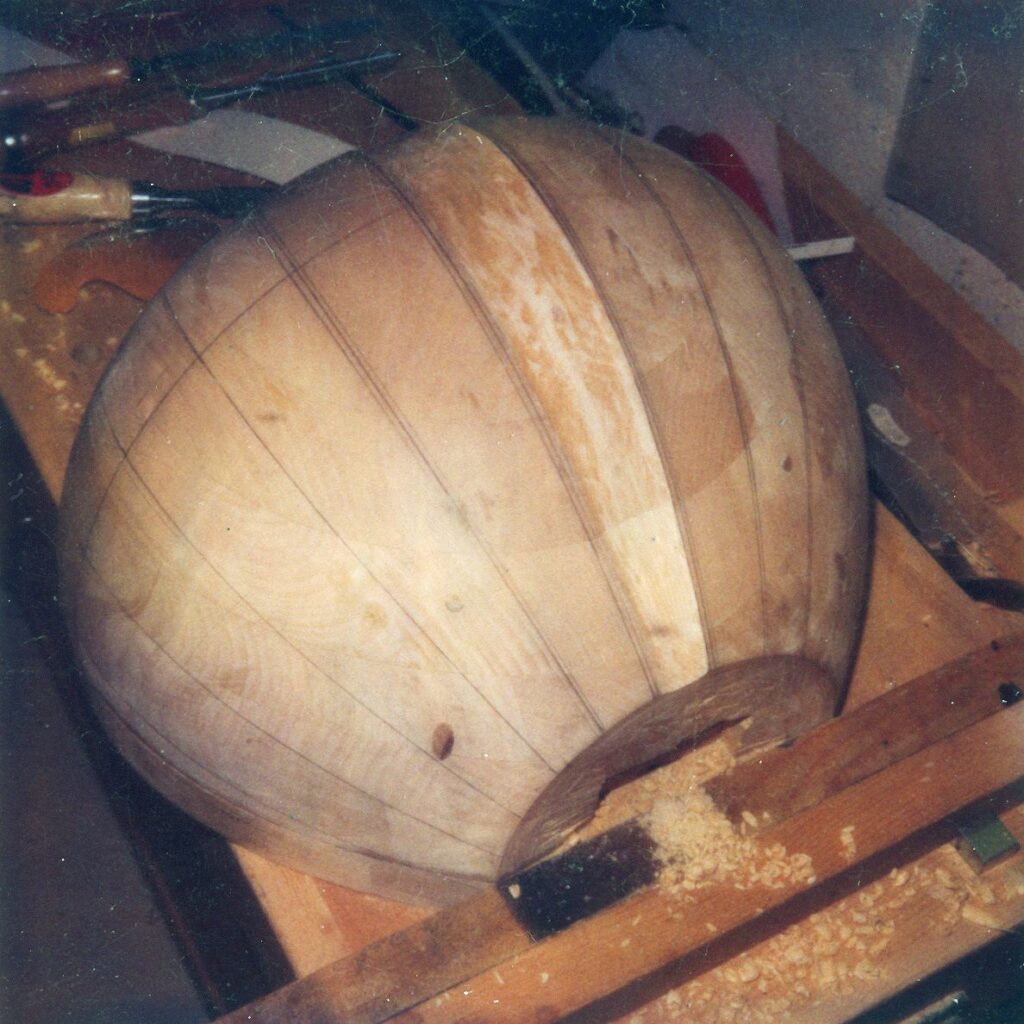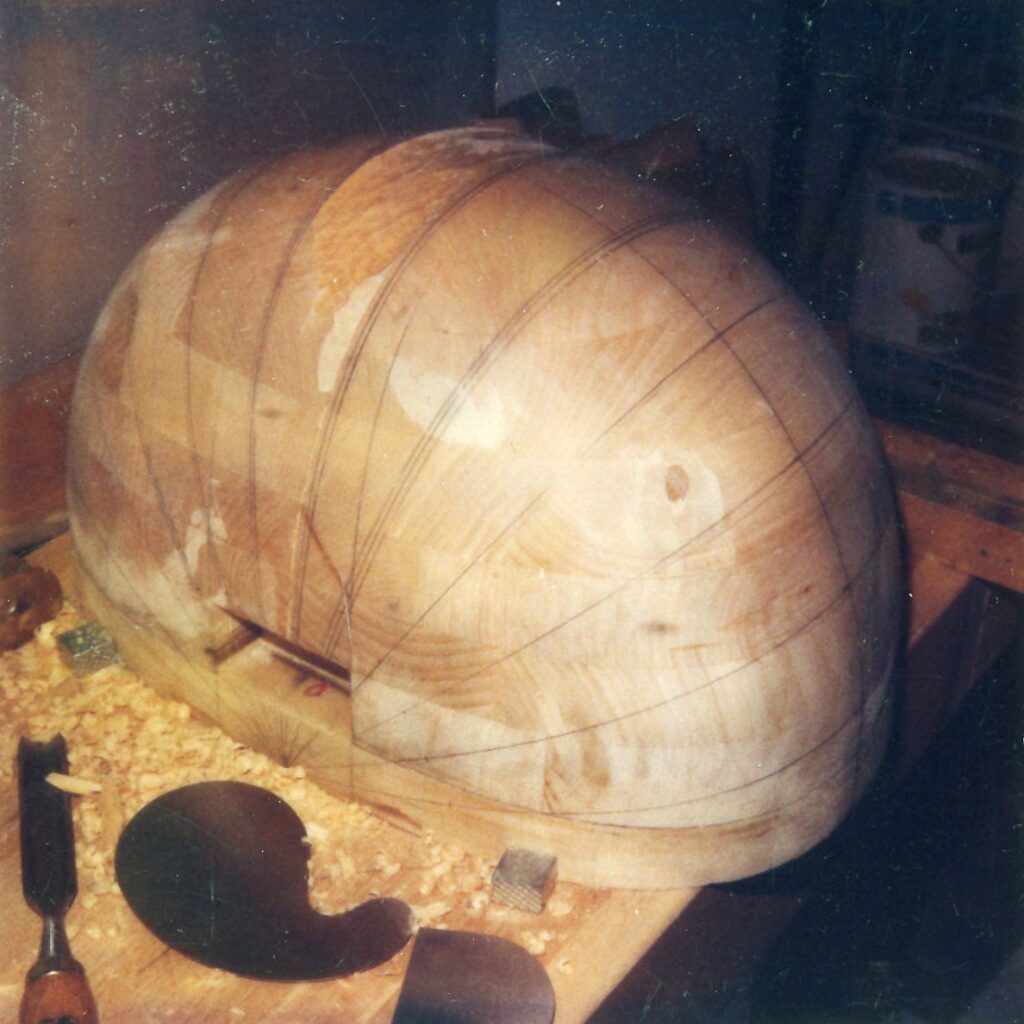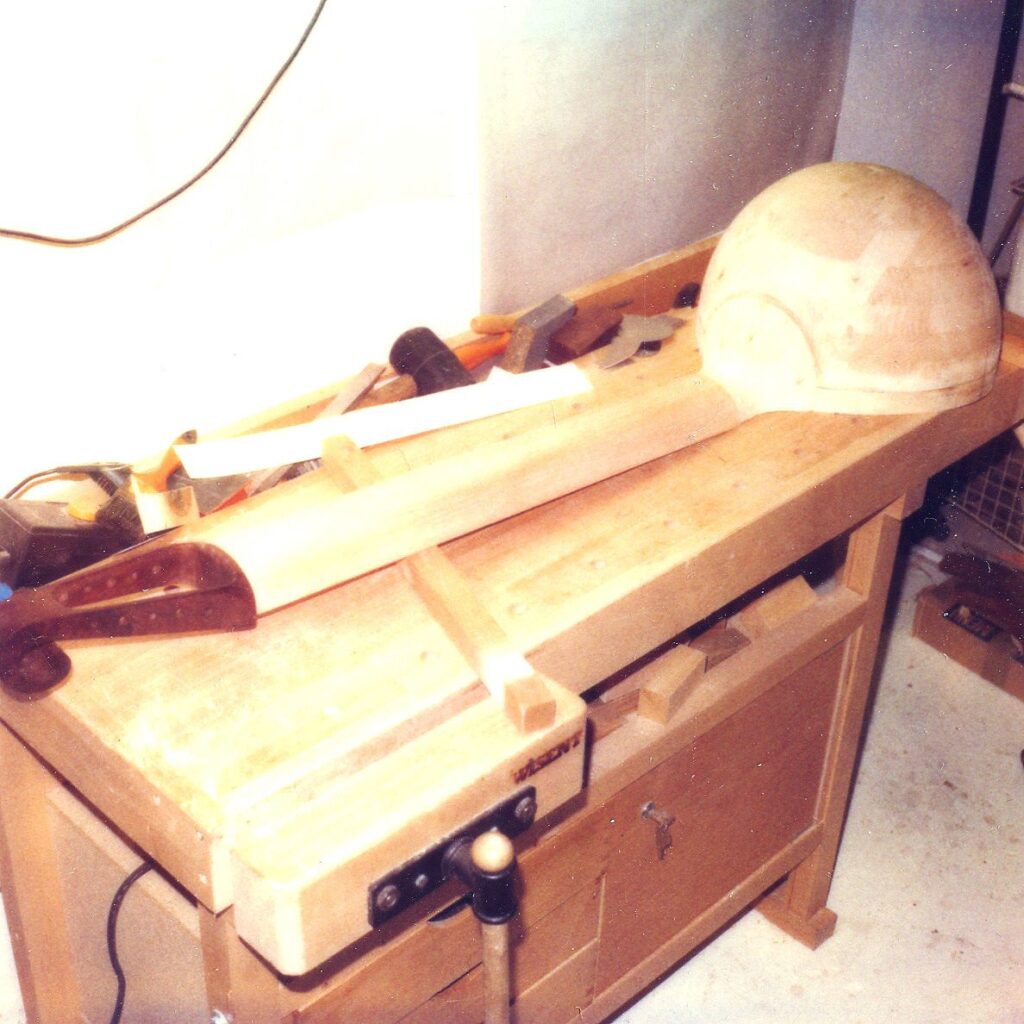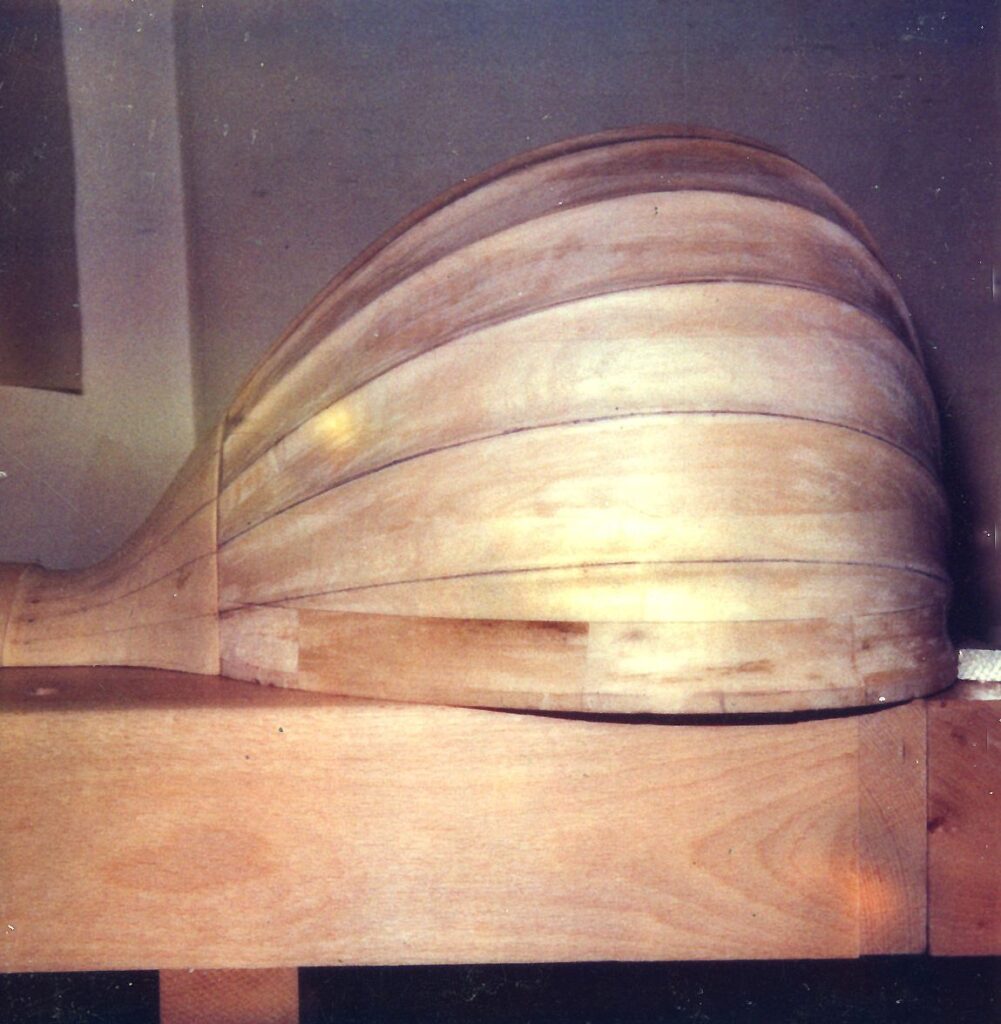Neck & body of Dieters first lute-style sitar is made from maple. The tabli (soundboard) is spruce, pegs are ebony, headstock & decorations from rosewood.
A speciality of this sitar is a slightly wider neck resulting in more meend (lateral pulling of the main string) range than most other sitars of Dieter. The taraf string bridge being hidden underneath the main bridge is a very unique design feature that makes its outward appearance even closer to that of a lute.
The currently used main bridge is from snakewood. It is strung up as kharaj-pancham sitar and has 13 sympathetic strings. Bass-Pa and Bass-Sa strings are flatwounds. In the recording it is tuned at C, it sounds very well in Csharp too.
| SPECIFICATION | MEASUREMENT |
| Total length | 132 cm |
| Scale length | 85.3 cm |
| Bridge height | 2.9 cm |
| String height over last fret | 10 mm |
| Neck width | 9.6 cm |
| Tabli diameter | 37.7 cm |
| Toomba circumference | 106 cm |
| Weight | 2.2 kg |
| Meend range (at C# tuning) | S → d ; P → R (higher) |






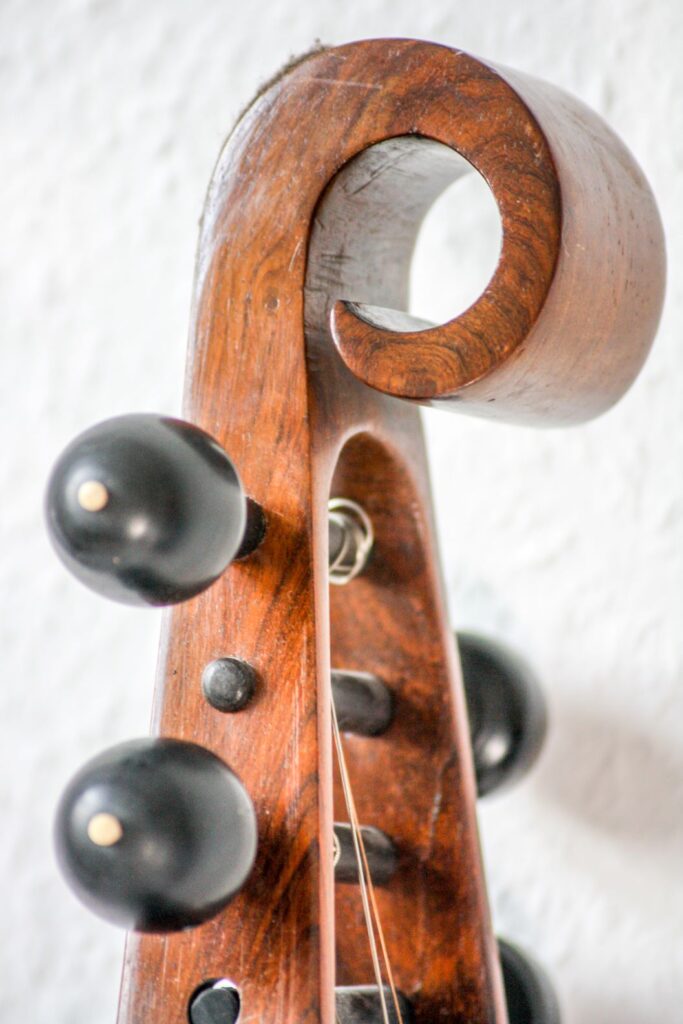

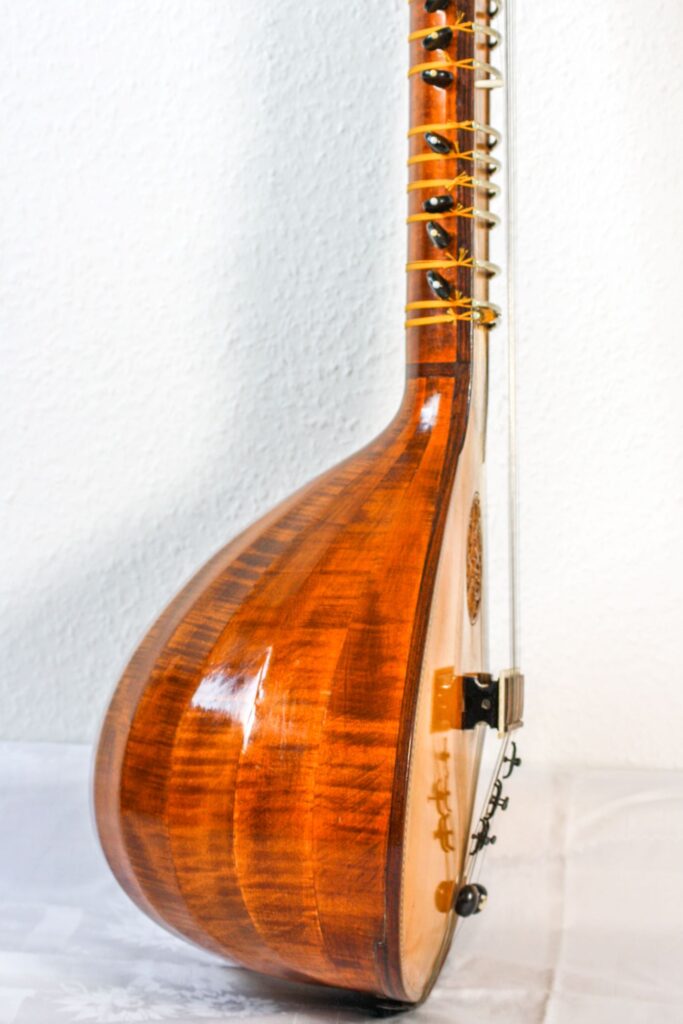


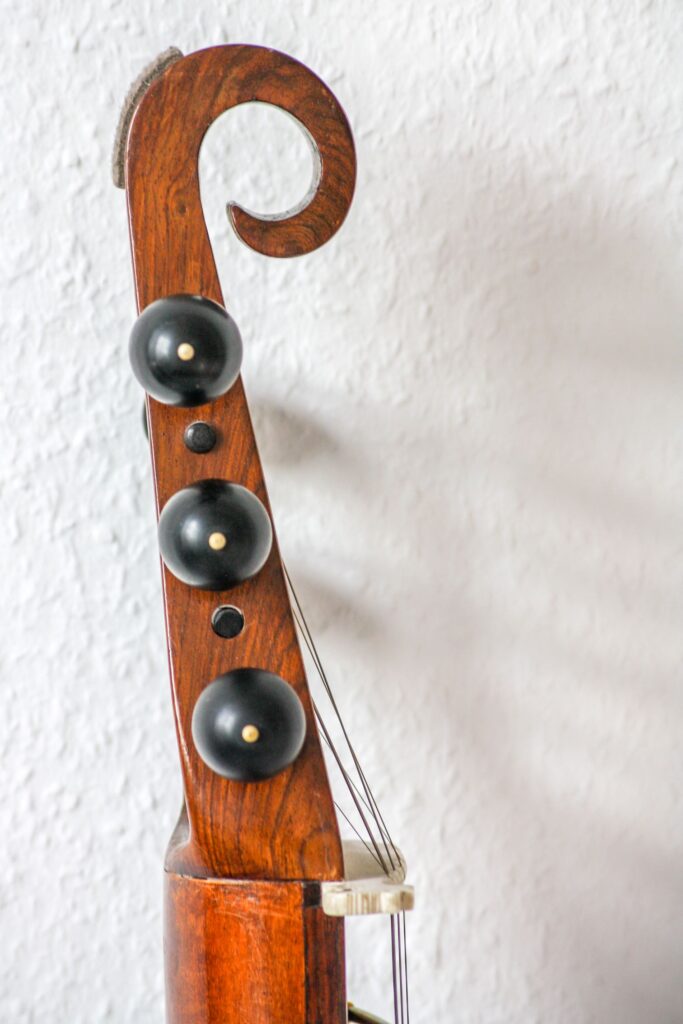



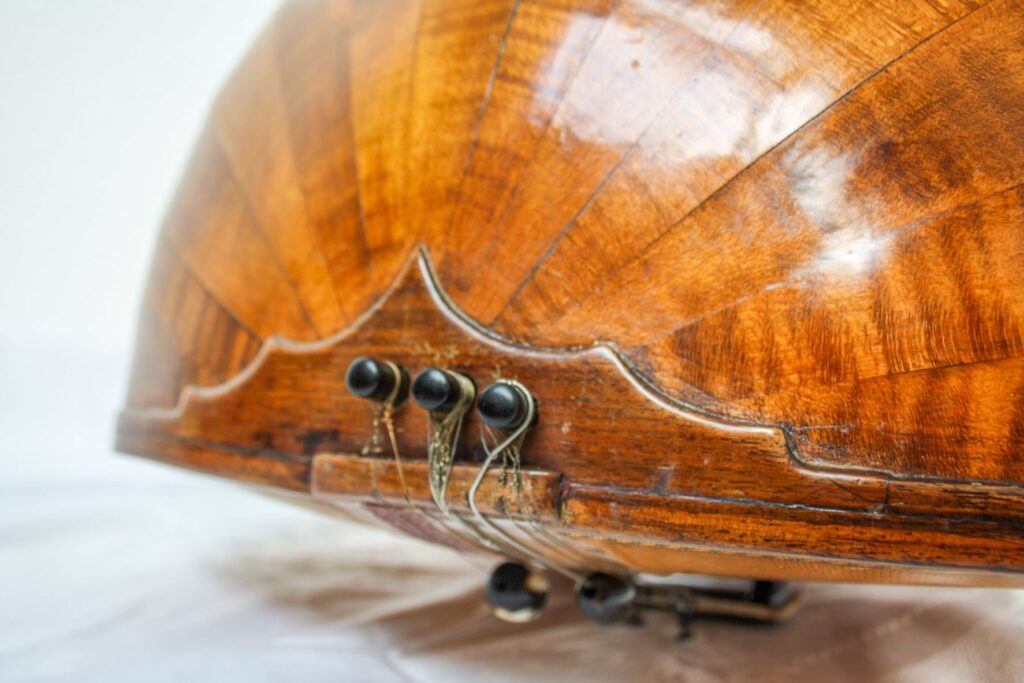


A few pictures from Dieters workbench. I am not 100% sure that the sitar seen in construction here is indeed #1. But anyway you can see a part of his sitar-making-process and also get a glimpse of his beautiful construction-drawing. I might add the complete drawing at a later stage:

